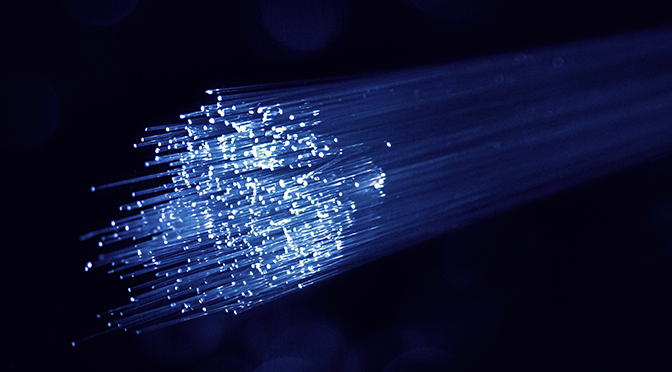Background
Twenty years ago, most commercial and residential users accessed the internet over the UK’s ageing network of copper wire-based telephone circuits. Due to the technology involved, copper circuits could only work at slow or very slow speeds (bandwidths).
As other countries started implementing faster optical fibre-based internet connectivity, the UK government recognised that UK commerce could be disadvantaged. In 2017, the Department for Digital, Culture, Media and Sports (DCMS) launched a Local Full Fibre Network (LFFN) grant to help fund the installation of fibre optic cable in selected cities and increase the availability of faster internet speeds for all.
The bid
Greater Manchester Combined Authority (GMCA) bid for a portion of the available grant funds on behalf of the ten Manchester local authorities, Transport for Greater Manchester, and the Fire and Rescue Service.
The public sector organisations would act as ‘anchor’ tenants, the first users of the new fibre network, which would offer the public sector cost savings over the traditional leased fibre network they typically use. Other commercial organisations could take advantage of the additional fibre capacity that the suppliers would install when connecting the public sector building locations.
The bid required each partner to evaluate which of their sites needed a fibre connection and consider the current contracts each partner had with their respective network suppliers.
In March 2018, the DCMS announced that the GMCA bid successfully secured a £23.8m grant to create a GM-wide ‘dark fibre’ network.
‘Dark fibre’
A dark fibre network is a fibre optic network that connects sites over a wide area. It is ‘dark fibre’ because it is not active. Once installed, a separate project is required to turn the dark fibre into an active network.
Fibre optic networks use light to transmit data rather than electricity with a copper network.
A dark fibre network becomes active when it has the equipment installed to send light signals down the fibre, known as ‘lighting up” the fibre.
Installation of dark fibre in Stockport
Once the grant money had been awarded, a procurement team was established, comprised of GMCA and partner representatives, including Stockport Council, to procure a solution and partner to install the dark fibre. A procurement of this size and complexity is no small task.
In 2020, Virgin Media was chosen as the fibre supplier, and the installation of 2,700km of fibre optic cable to around 1,600 GM public sector sites began.
Stockport Council had approximately 135 sites requiring the installation of fibre. These sites were either dedicated council offices, partner offices or schools. The council’s property portfolio changes over time, and we were signing up for a network to use for at least 30 years. It was important to connect as many properties as we could and, where possible, to make allowances for known new sites.
Each site installation needed a survey, civil engineering work, such as digging up roads and pavements to install ducts for the fibre, a team to pull in the fibre, a team to terminate the fibre and finally, a visit to carry out an end-to-end test.
The work was a joint effort between Virgin Media and various council teams, including Development and Regeneration, IT Infrastructure and AVA, the schools support team.
There was a time limit to install the fibre imposed by the DCMS. The team carried out most of the installation work during the pandemic, which caused issues as many of the sites were closed with staff working from home.
By early 2022, the project had connected almost all of Stockport Council’s sites and schools. The few still to be connected included new sites such as Stockroom and Gatley Hill House and sites with wayleave or technical issues.
Social Value from the LFFN contract
As with all large procurement contracts, we expected the winning bidder to ‘put something back’. Virgin Media Business has so far delivered:
- £50,000 support for the Greater Manchester Technology Fund during the Coronavirus pandemic. The tech fund supported young people at risk of digital isolation with the technology and connectivity needed to continue their learning at home while schools and colleges remain closed
- 23 apprenticeships based in Greater Manchester (civil engineers, fibre engineers, field technicians and telesales) as well as investing in digital and Science, Technology, Engineering, and Mathematics (STEM) skills for young people
- One thousand hours of volunteering to support people across Greater Manchester – including delivering support packages to residents as part of a local food bank initiative and supporting the safe delivery of coronavirus vaccinations
- £100k to Greater Manchester Mayor’s Charity to support the ‘A Bed Every Night’ programme
What’s next?
During 2021/22, a second project, the GM One Network, was initiated to find a partner to work with to ‘light up the fibre’. GM One Network will create a working network that will provide each partner organisation with a state-of-the-art, high-performance network and underpin GM-wide digital transformation and smart city projects.
Stockport Council has been leading the partnership with GMCA and other public sector partners to ‘light’ the dark fibre, turning it into one of the largest city-wide networks of its type in Europe.
The procurement element of the GM One Network project is now complete, the current phase will be the design and build. We will provide an update in our next blog: Building a world class digital city region on the LFFN foundations.
Photo by Denny Müller on Unsplash
For regular updates from the #DigitalStockport blog, sign up for email alerts.

